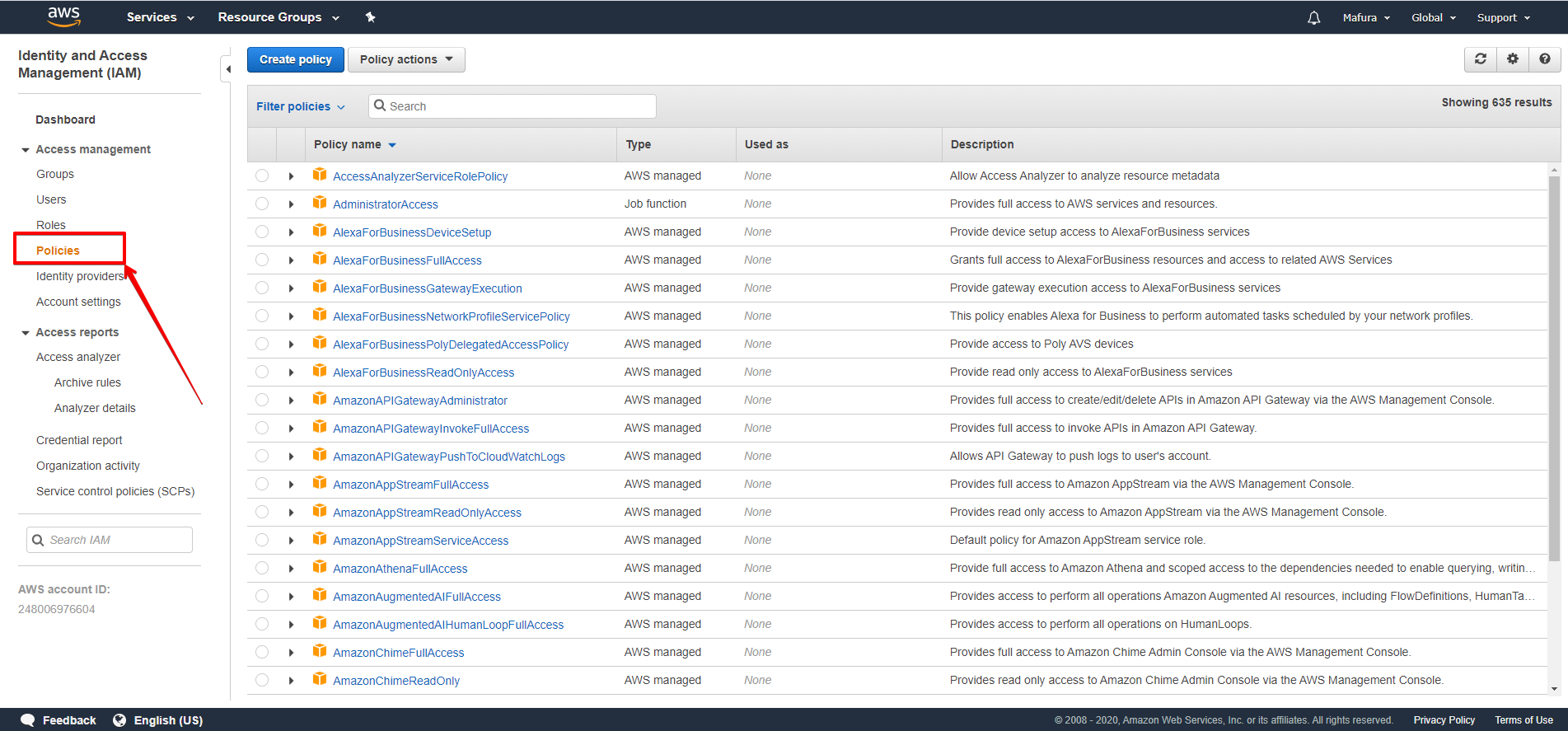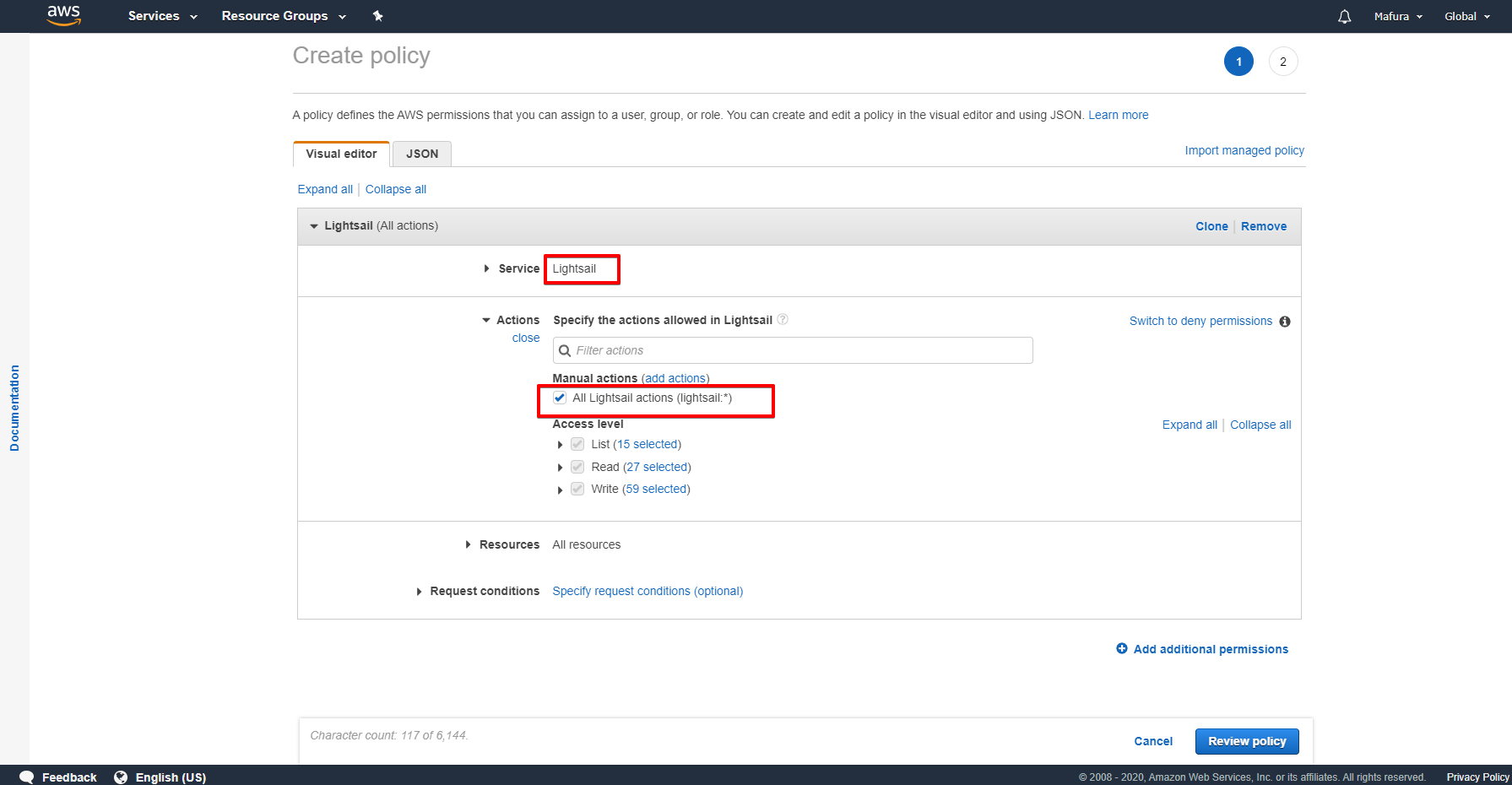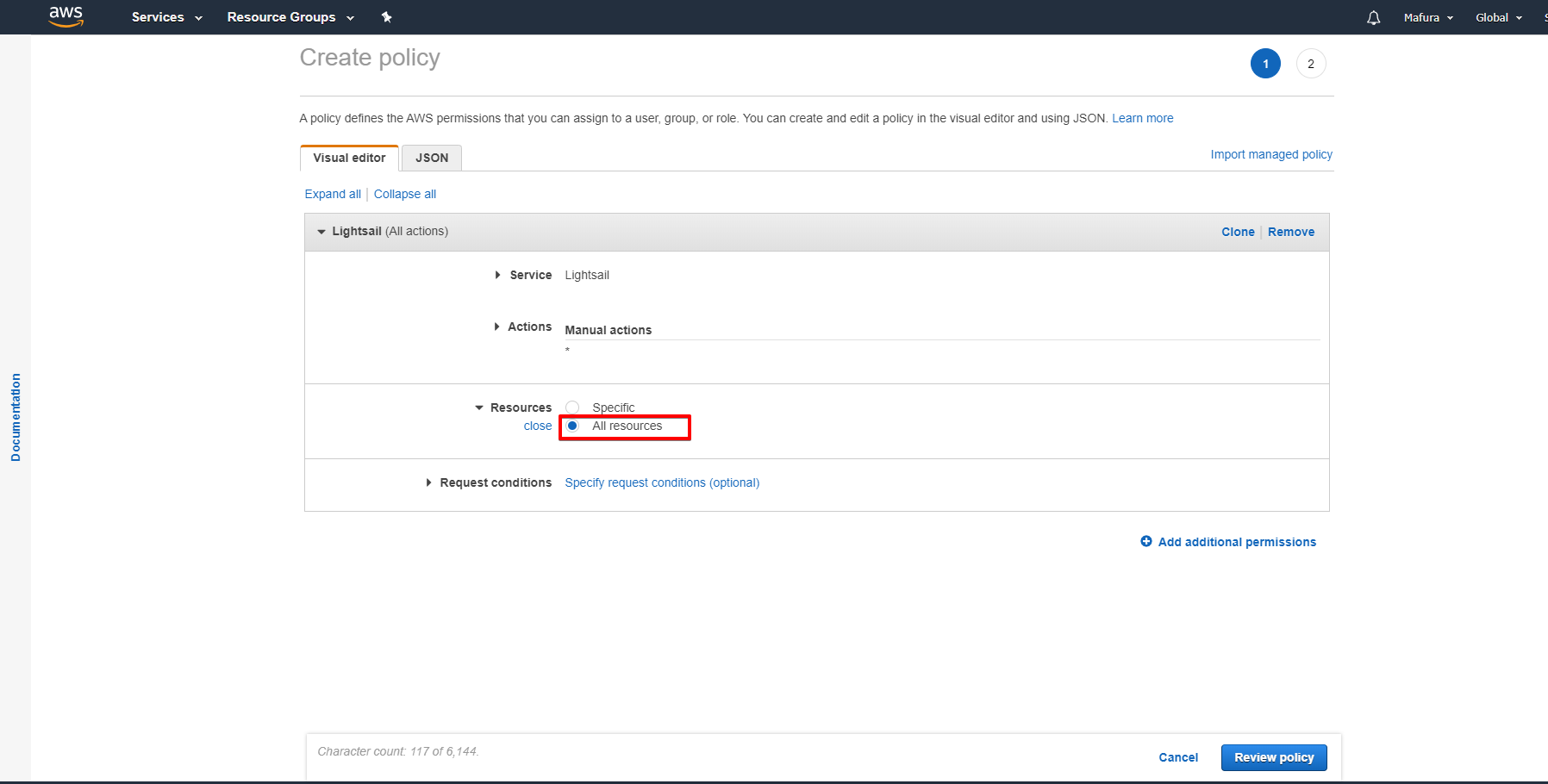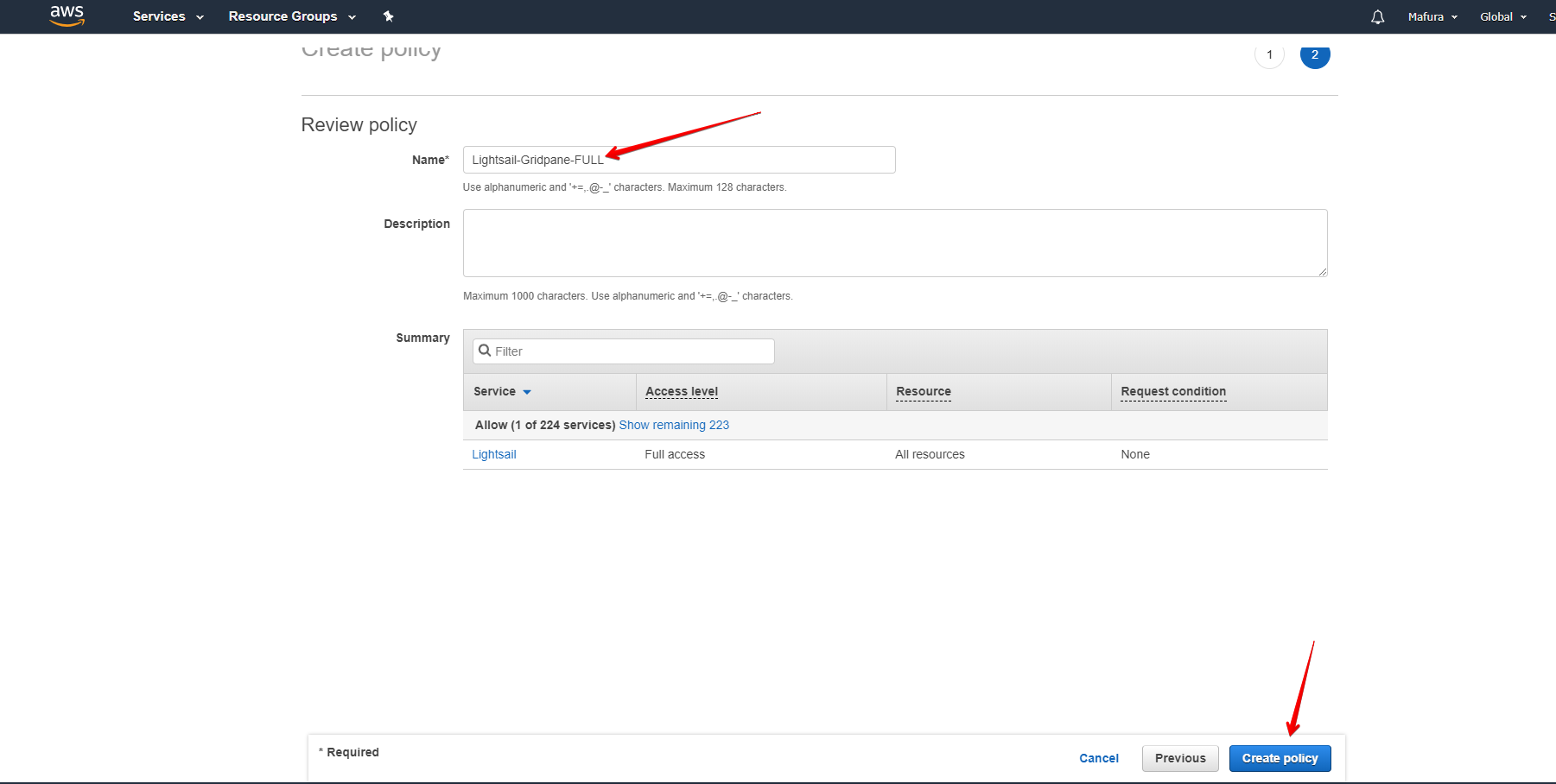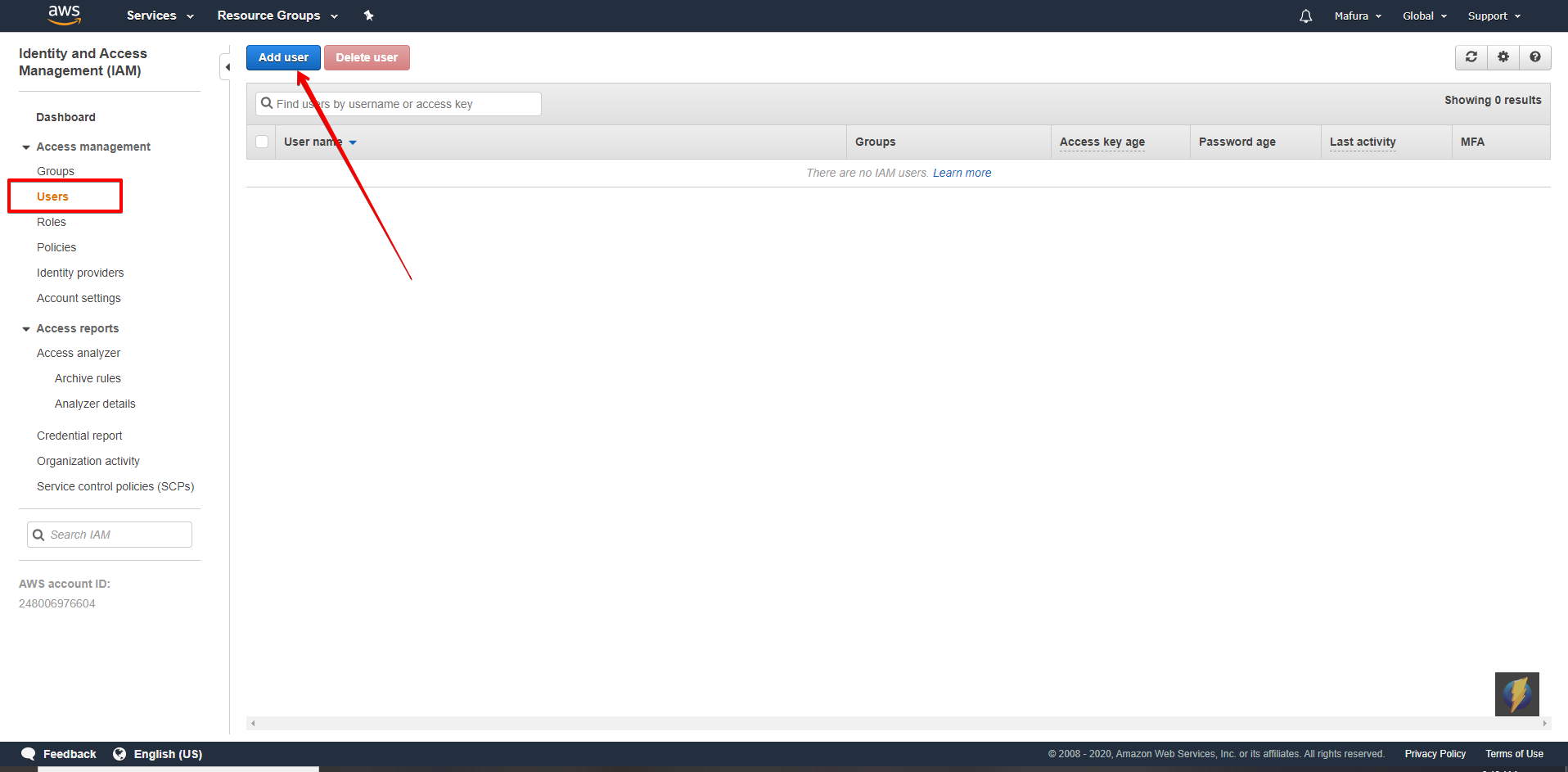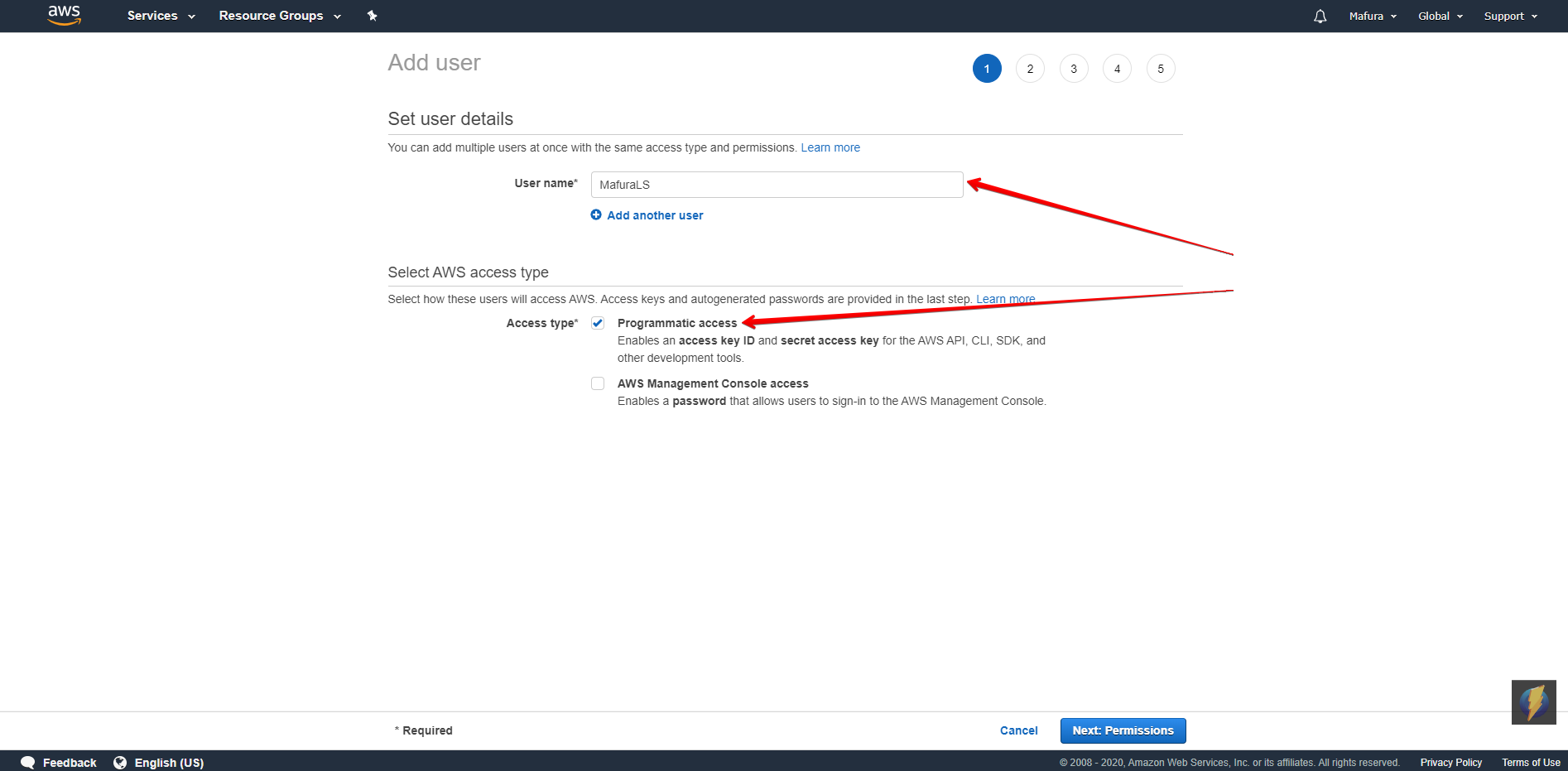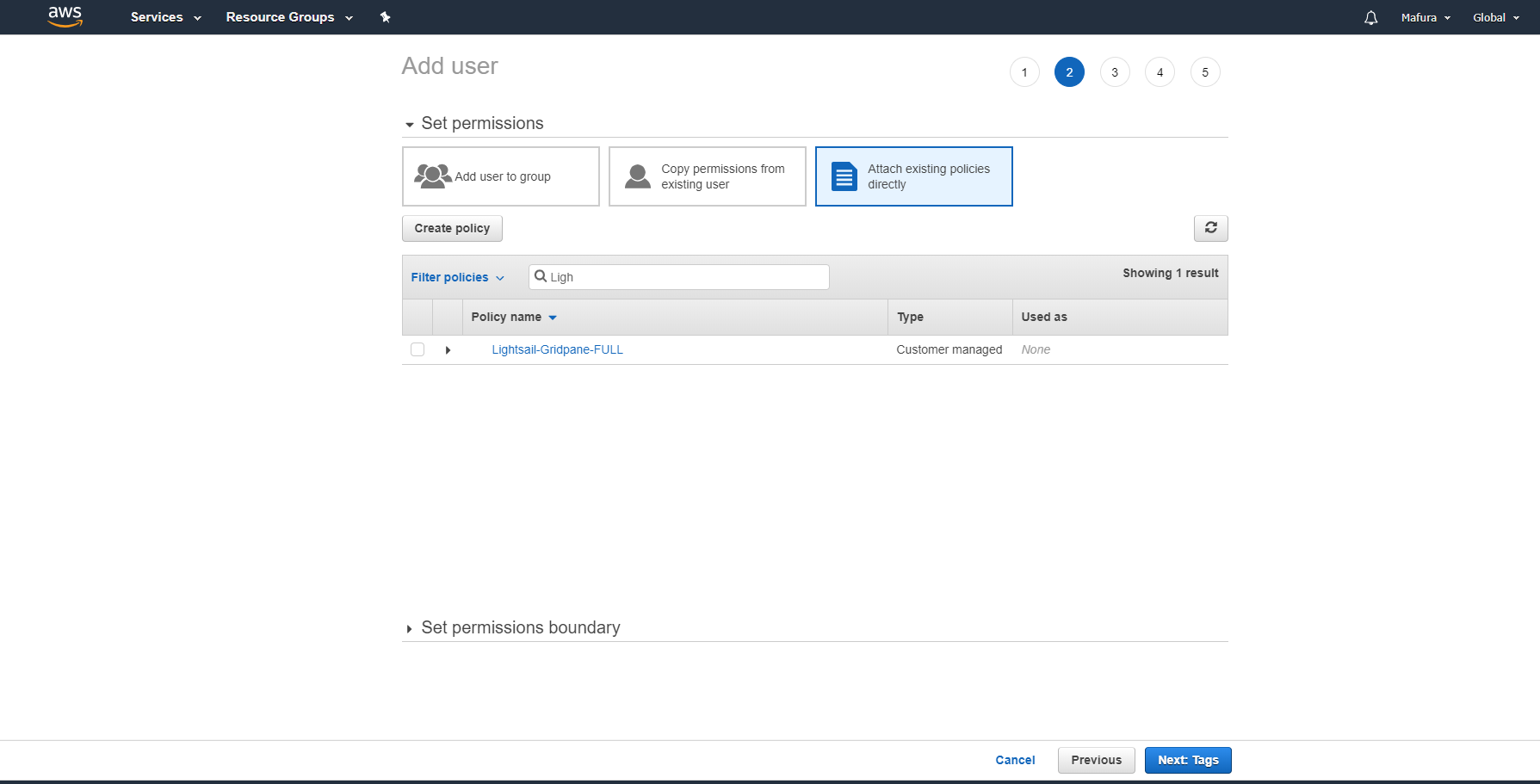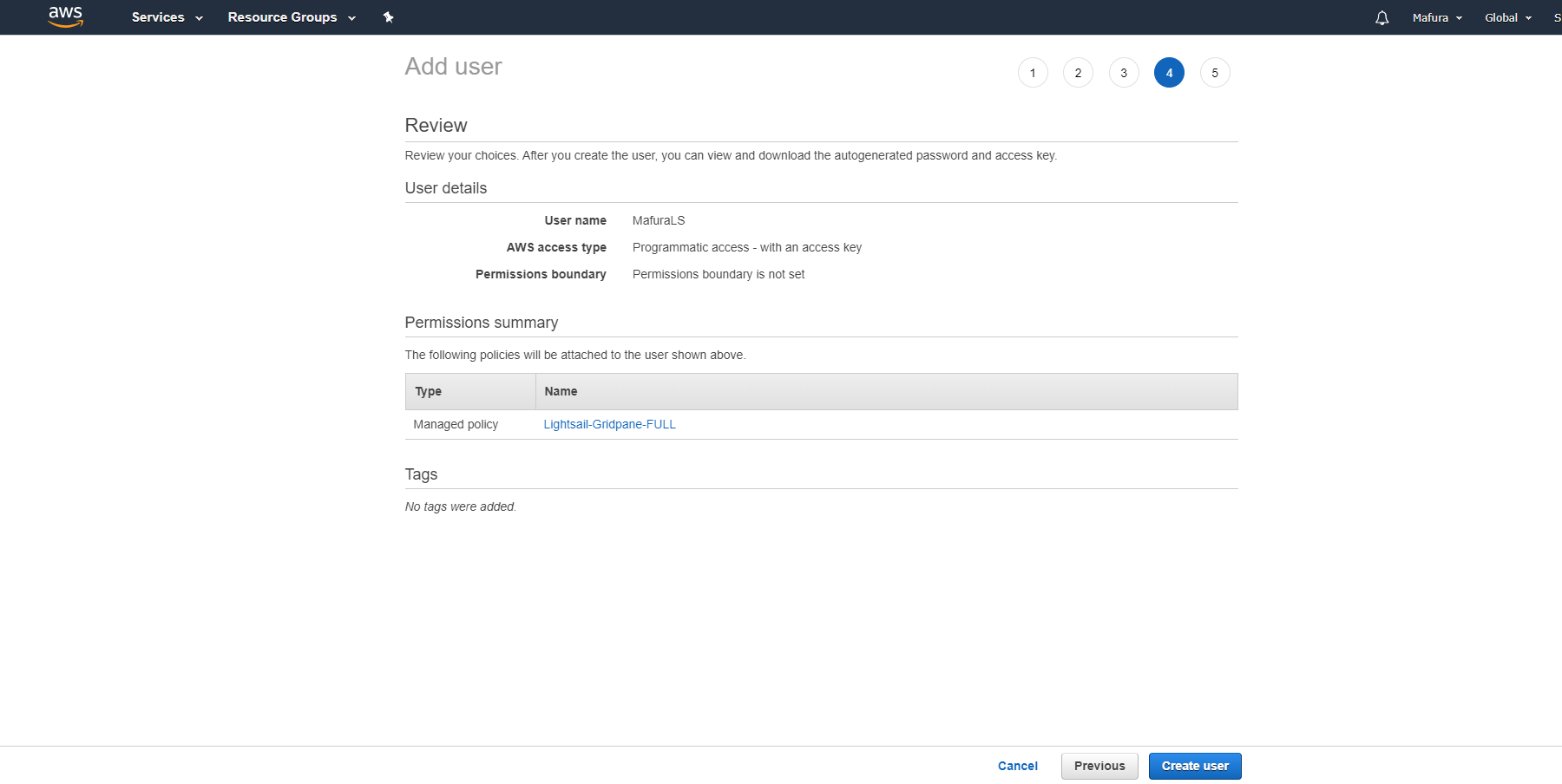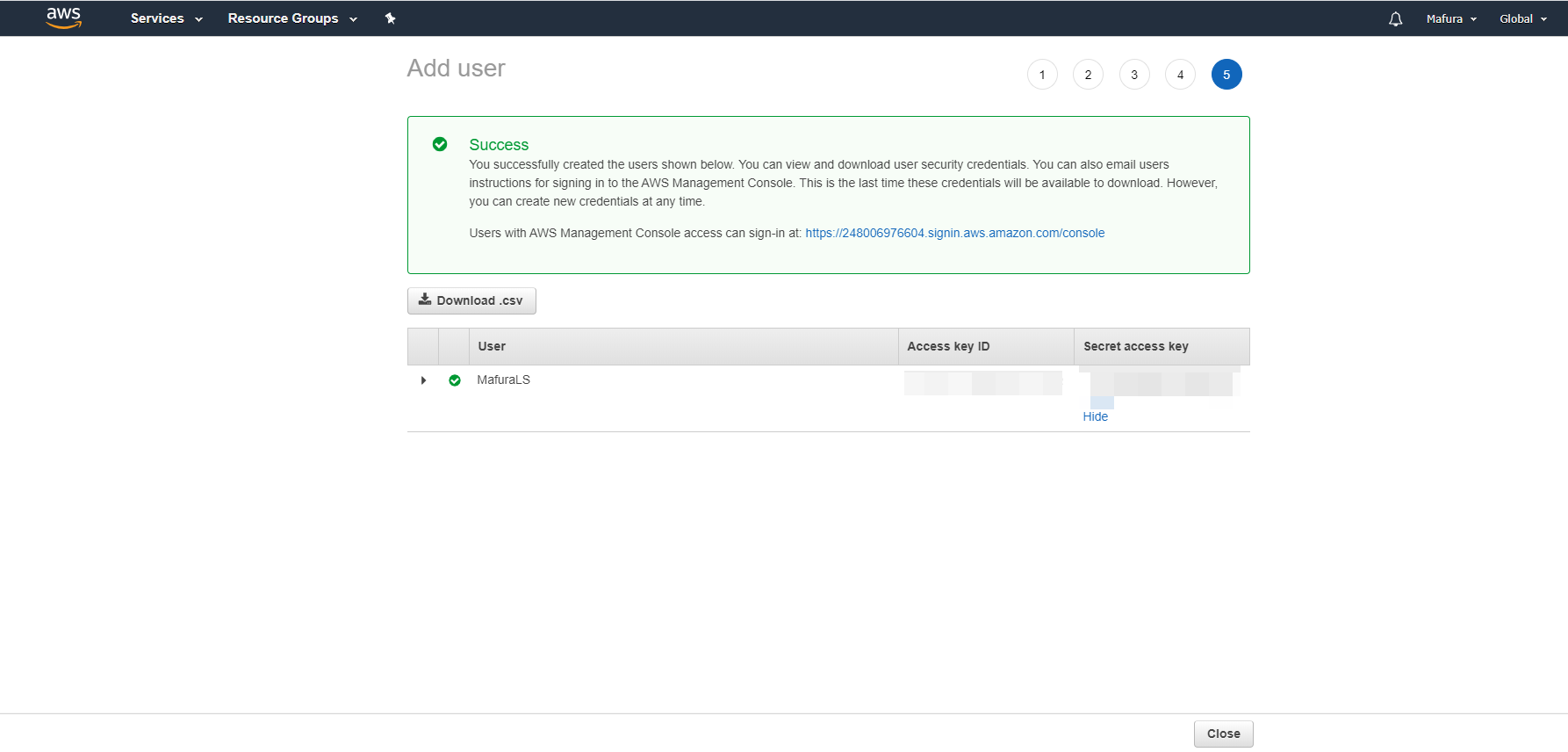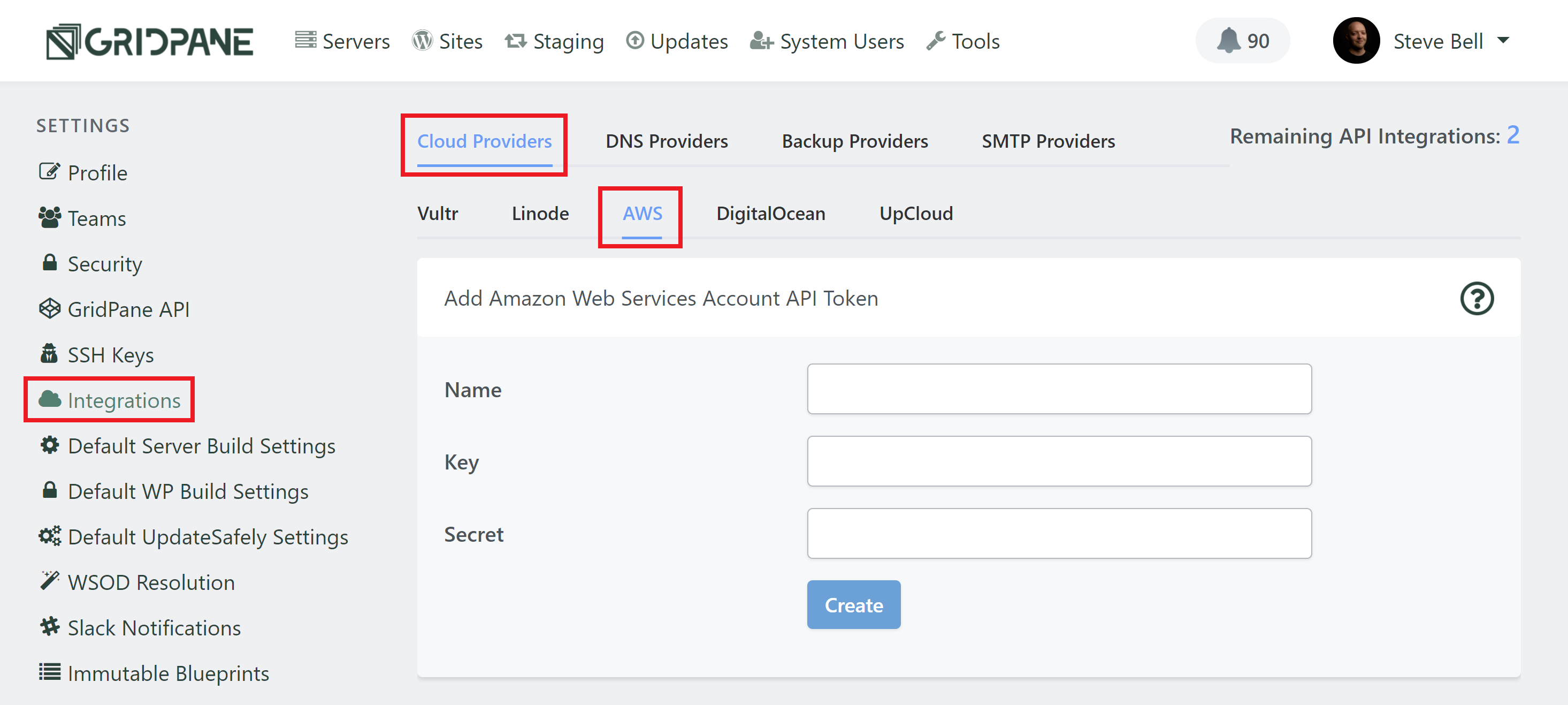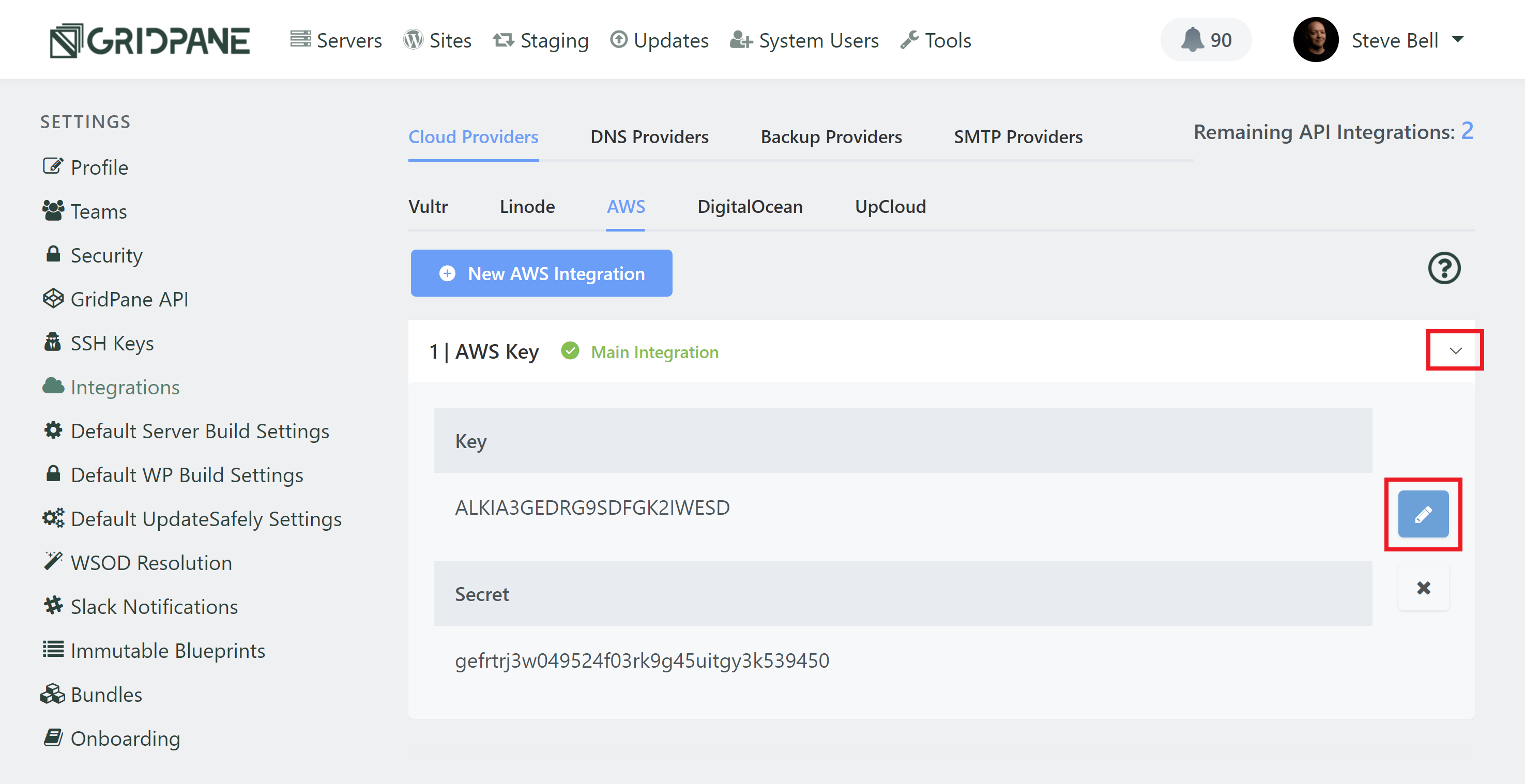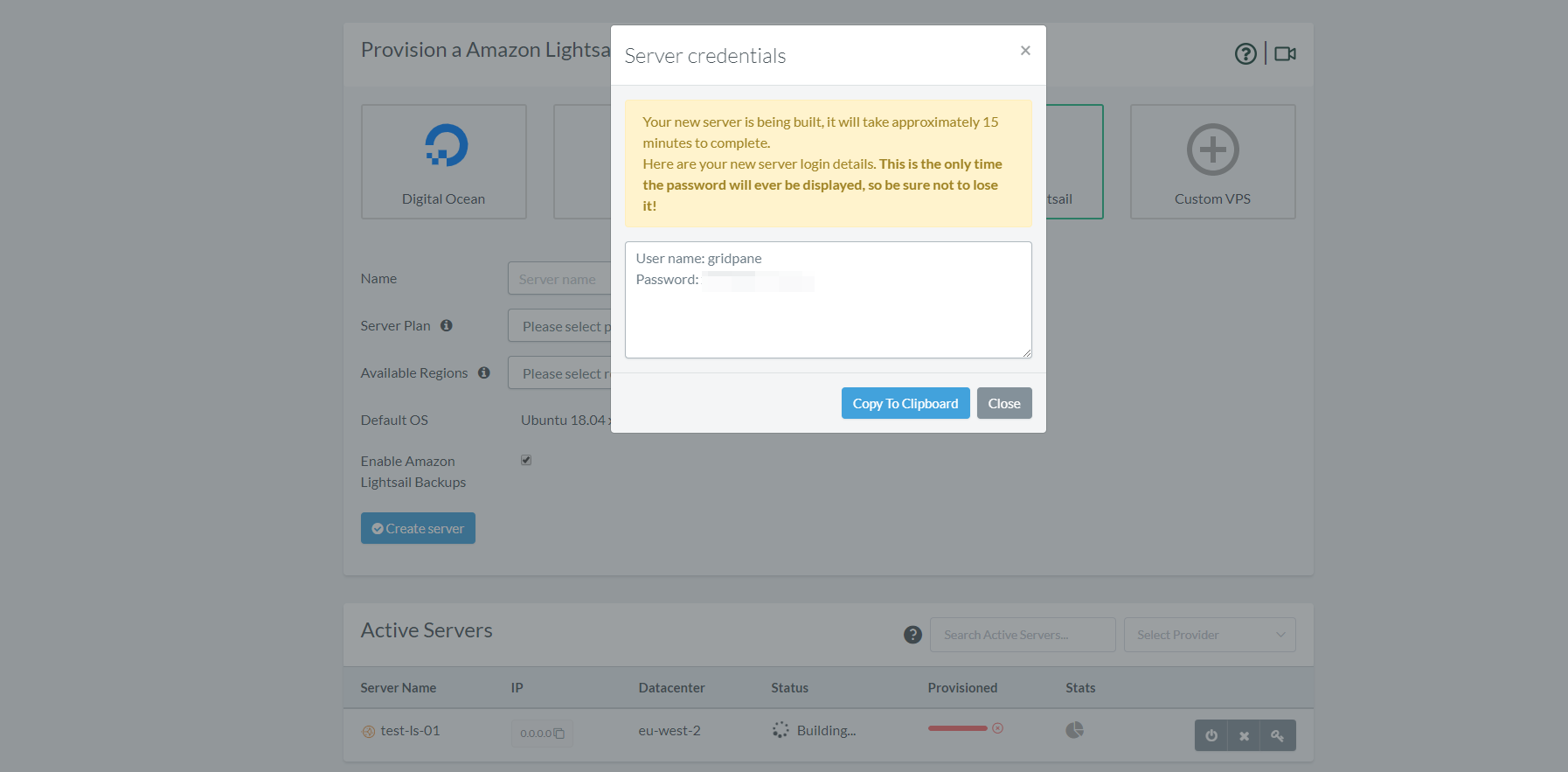Introduction
In this article, we’ll be walking through all the steps to get started with AWS Lightsail and GridPane. We’ll first take a look at getting things set up in your AWS account, and then we’ll provision an Lightsail VPS directly from within our GridPane dashboard using the AWS API.
Table of Contents
IMPORTANT
Amazon Lightsail only supports a limited number of static IP addresses by default. You may need to get in touch with their support after you've created your first 5 servers to increase your allowed limits.
Static IP Addresses and AWS Lightsail
The info in the above warning box means that if you create more than 5 servers, number 6 onwards may not be assigned a static IP address, and this has the potential to cause some serious problems for these servers.
If your Lightsail server does not have a static IP, then when this server restarts for the first time, it may be assigned a completely new IP address. This will disconnect your server from GridPane, but more importantly any websites that are on this server will cease to be accessible because the DNS records will now be pointing to the wrong IP address.
Not everyone runs into this issue, but please keep this in mind if you’re creating multiple Lightsail servers at the same time and/or you have more than 5 servers already. You can learn more directly from AWS here:
Step 1. Create a Lightsail Policy for GridPane
To get started, log in to your IAM console here.
Once inside the console, choose Policies in the left navigation pane:
In the Policies, panel click create:
Clicking create will fire up a wizard as shown above. Choose Lightsail Sevice and in action option, choose All Lightsail Actions in Manual Action.
Under Resources choose All Resources. Please check the image below)
Click Review Policy. The next wizard window pops up, set the name of policy to Lightsail-Gridpane-FULL then click Create policy.
Step 2. Create a Key and Secret
Still, in the IAM console, choose users on the left-hand navigation screen. Click on Create User
The Add user wizard activates. Choose a suitable name for your user and put a tick programmatic access checkbox.
Choose Next: Permissions. Click Attach Existing Policy Option then choose the Lightsail-Gridpane-Full policy we created in step 2.
Click Next to the tags Panel, leave everything default here and click User Review to and cross-check the user name and chosen security policy.
If all is correct click Create User. The next panel will have the Key and Secret for your user. Please note these values somewhere since they will NEVER be shown again. You can download these credentials as a CSV file.
Step 3. Add Your Amazon Lightsail Key and Secret to GridPane
Log in to your GridPane account and click the Your Settings menu item in the dropdown menu accessible by clicking on your username and icon.
Locate and click the Integrations option in the left horizontal menu, and then enter the AWS Personal Access Token you copied in Step.3 above into the Key and Secret fields, give your key a name, and then click Create.
View/Edit your Amazon Lightsail API Token
Your AWS API Token will now be available from this settings panel. If you wish to edit or change your API Token, you may do this by clicking the down arrow followed by the edit button with the blue pencil icon.
A popup modal will appear and you can easily change your AWS Personal Access Token and click Update.
Step 4. Provision a Lightsail Server
Now we have our Amazon Lightsail Key and Secret saved in our GridPane settings we are able to provision Instances with it from within GridPane. First, navigate to the Servers page in your account:

Configure your Amazon LightSail Server
Select Amazon Lightsail from the choice of Cloud VPS providers and a configuration panel will open.
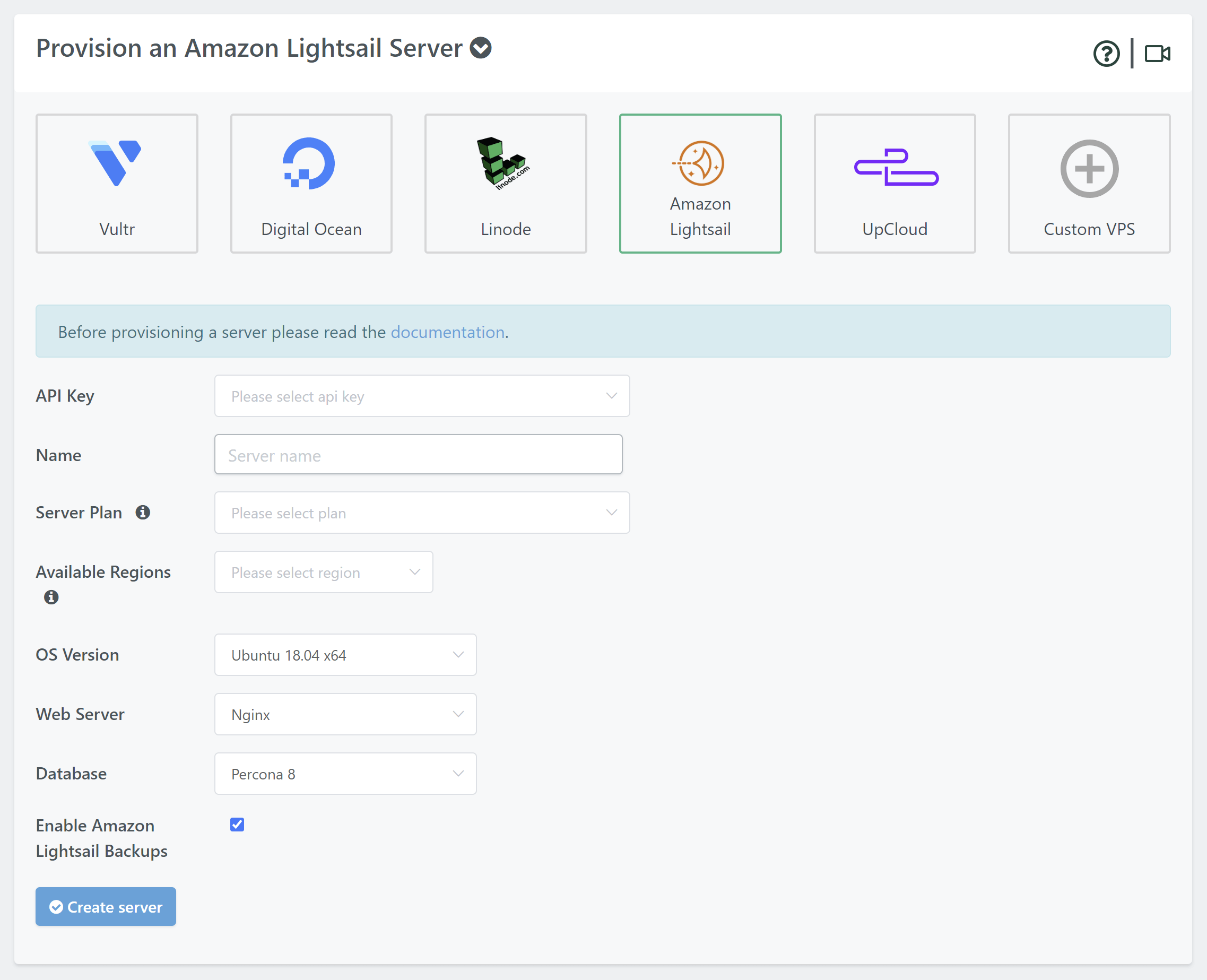
Enter an appropriate name for your Lightsail server, and then choose a server plan and region from the dropdown selectors, before choosing whether or not you wish for Lightsail Backups to be enabled.
OS Version
We recommend that you choose Ubuntu 22.04 LTS as the default OS.
Choose Your Web Server
You have the option to choose between Nginx and OpenLiteSpeed. This is largely personal preference. If you’re unsure which one to choose, start with Nginx.
Choose your database
If you’re on the developer plan you’ll have the option to choose between Percona and MariaDB for your database.
Percona is a drop-in replacement for MySQL and includes security, availability, and availability features that are only available in enterprise MySQL. It has removed query caching, and it has more advanced aspects for things like storing and managing JSON as a storage format.
MariaDB could mean fewer issues importing old WordPress websites from low-quality hosting environments. It will likely use less RAM than Percona and may offer performance benefits for some websites.
Both are excellent options.
Provider backups
We highly recommend that you enable provider backups. It’s a small price to pay for the extra insurance they offer.
Additional note: You will need to set this up directly at your server provider when using our custom server option.
Create your server
Click the Create Server button when you are happy with your configuration choices.
Step 6. Wait 10-15 Minutes
GridPane will begin provisioning your instance. You will now be able to see your instance in the Active Servers list.
At any time during the provisioning process, you may check what stage the process is at by rolling over the progress bar, a pop-up window will display the current job being completed.
Once GridPane has finished provisioning your Lightsail server the progress bar will turn green, and you will be able to deploy some Serious WordPress Sites on it.
Congratulations! Next Steps
Now that your server is live, you’re ready to start creating and configuring new WordPress websites.
To deploy a site click on the Sites link in the GridPane main menu to begin the process. We have a separate article that details the steps in detail for you.


